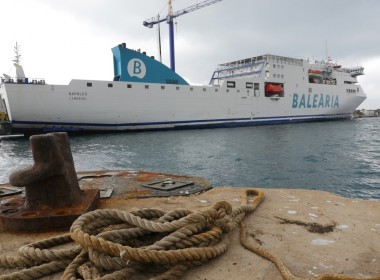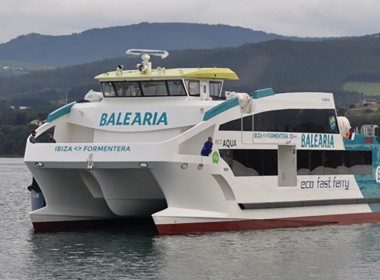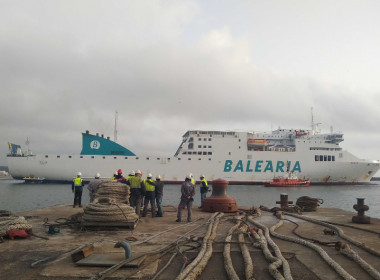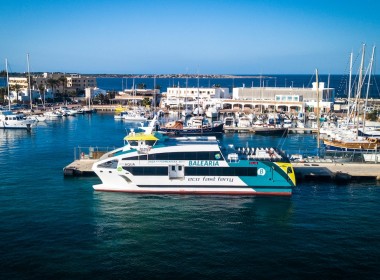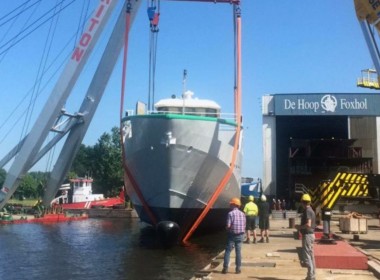VESSEL REVIEW | Cap De Barbaria – Spain’s Balearia to operate electric lifeline ferry

Spanish shipping company Balearia recently welcomed a new locally-built Ro-Pax ferry to its fleet.
The double-ended vessel has been named Cap de Barbaria after a promontory that lies on Formentera in Spain’s Balearic Islands in the Mediterranean. It will be operated as a lifeline ferry transporting passengers, vehicles, and essential goods between Formentera and the neighbouring island of Ibiza as well as the Spanish mainland.
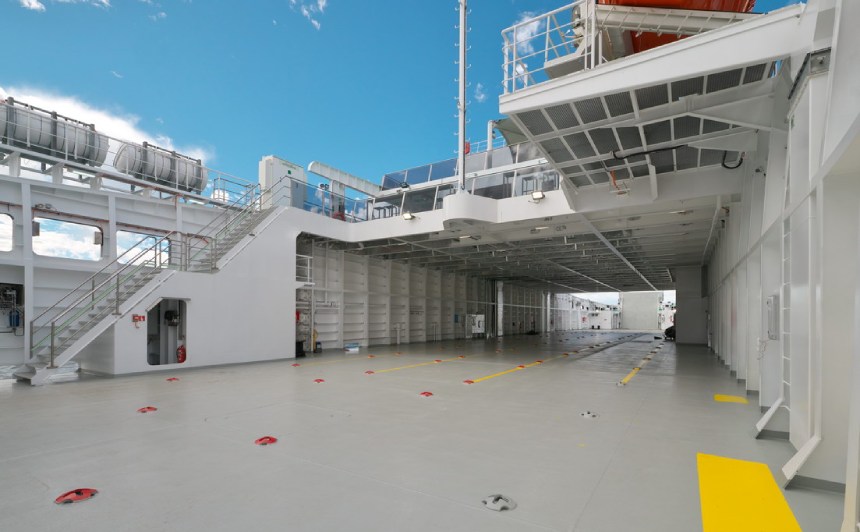
Built at the Vigo facilities of Armon Shipyard, Cap de Barbaria has an LOA of 82 metres, a beam of 15.5 metres, a draught of 3.8 metres, a gross tonnage of 2,545, and space for 390 passengers and 240 lane metres of freight or a total volume equivalent to that of 14 lorries. A lift provides access between the freight deck and the two passenger decks.
The ferry features outdoor spaces on the two passenger decks as regular sailings cover only short distances and are generally done in clear weather. The upper deck outdoor space also has lounge seating, hammocks, and a large bar.
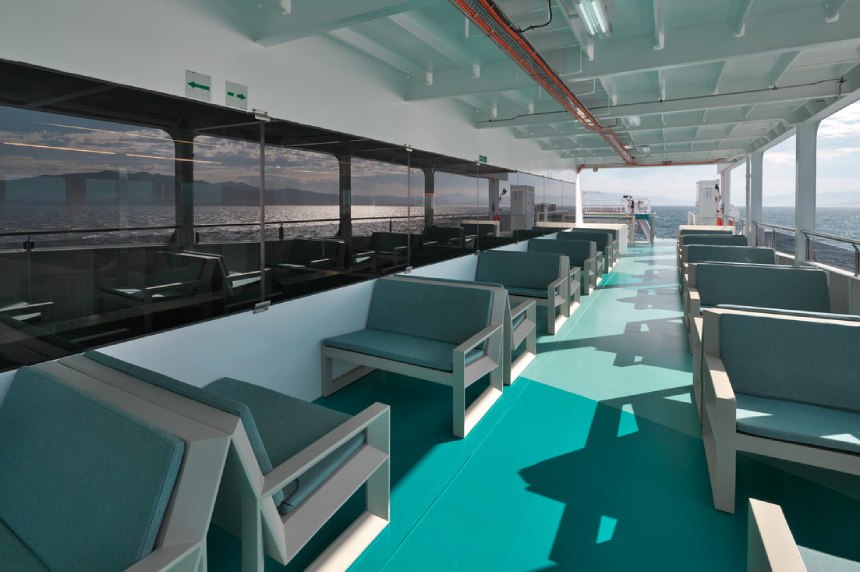
The interior of the main passenger deck meanwhile boasts mess tables, a kiosk, and a children’s play area. Other accommodation areas include crew cabins, a mess, and toilets. All interior spaces benefit from acoustic features that significantly reduce any outside noise.
Power for both the propulsion system and the hotel load is supplied by a hybrid electric arrangement consisting of azimuthing motors, three Caterpillar generators, and lithium-ion batteries that are also capable of shoreside charging. The propulsion system can deliver a maximum speed of 14 knots and the batteries can supply up to 12 hours of hotel load electrical power. An intelligent management system is also fitted to allow for the more optimal use of available power, thereby improving the ferry’s operating efficiency.
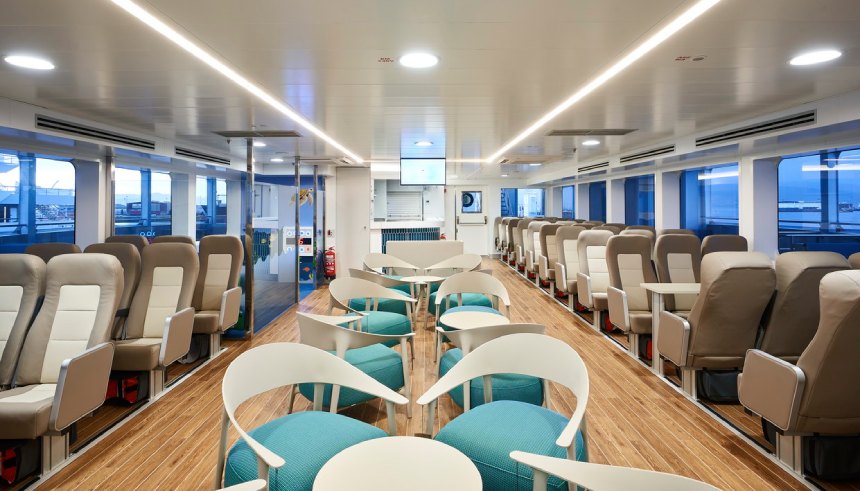
Although intended to operate on batteries particularly when navigating in port waters and while at berth, Cap de Barbaria was designed from the outset to be hydrogen-ready. The ferry therefore has ample onboard space for the future installation of a green hydrogen propulsion system that will also include a 200kW fuel cell. Once operational, this system will be able to shoulder 30 per cent of the vessel’s energy needs for up to 24 hours.
Balearia said it plans to operate Cap de Barbaria partly as a testbed for green hydrogen propulsion. The company expects that any insights gained from the project will aid in the continuing development of hydrogen propulsion technology, particularly in the introduction of transport and storage systems that are more mature and more stable than the compressed hydrogen systems currently available.
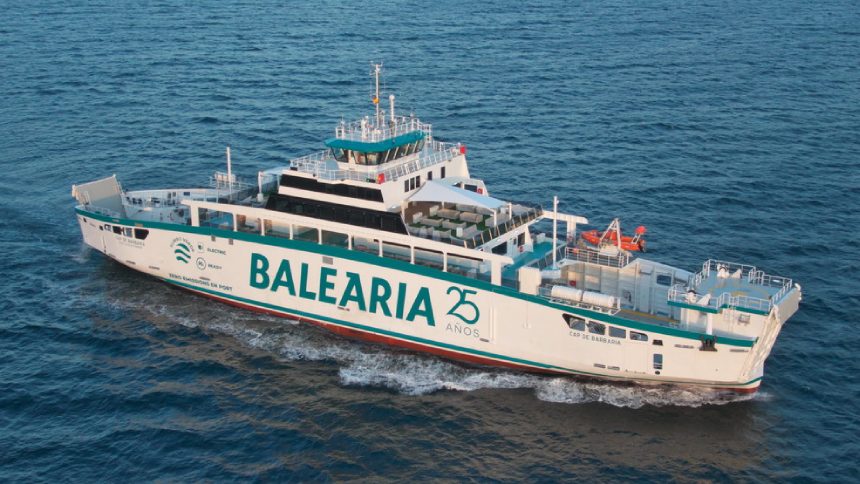
| Cap de Barbaria | |
| SPECIFICATIONS | |
| Type of vessel: | Ro-Pax ferry |
| Flag: | Spain |
| Owners: | Balearia, Spain |
| Builders: | Armon Shipyard, Spain |
| Length overall: | 82 metres |
| Beam: | 15.5 metres |
| Draught: | 3.8 metres |
| Gross tonnage: | 2,545 |
| Capacity: | 240 lane metres |
| Generators: | 3 x Caterpillar |
| Maximum speed: | 14 knots |
| Batteries: | Lithium-ion |
| Other electronics: | Intelligent management system |
| Accommodation: | Main passenger cabin; outdoor seating spaces; bar; kiosk; children’s play area; crew cabins; crew mess; toilets |
| Passengers: | 390 |
| Operational area: | Balearic Islands, Spain |



